This blog has 4097 posts since April 2003. My flickr photos includes 38,443 photos since March 2004. These are not numbers I call up to brag about (but please, tell me about about your 30,000th twitter follower).
On a more recurring basis, I have noticed how often I use both of them, especially an ability to search them. It’s not to say I have blogged about everything, but it is useful to me in my thinking and writing to have now an 11+ years worth of my ideas, thoughts, many of them obsolete, but often, relevant. My blog has much better recall and retrievability than my grey matter, but the latter is better at the loose association and pattern matching that send me using the former.
With a daily flickr photo posting habit since 2008, and a lot before that, I have a visual record of where I was, what I was doing for the last 10 years. Where was I July 19, 2011?. My photos tell me hanging out in northern Idaho with my friend Donna Gaudet, and her awesome dog Rudy.
Photos really work for my memory; they do not provide a full life stream record, but they generate enough neuropathic associative trails that help my better remember that day.
Yet flickr does not do that on its own. I have a regular daily habit of reviewing, editing, rejecting my photos, and I compose titles and captions and tags before I upload. I give my photos context, sometimes a little, sometimes a lot.
But having 8000 photos with the only information like a title IMG7688.JPG is using flickr as just a giant folder.
The thing is– all of this is a daily reflective practice I do primarily to serve myself; the secondary gains are a bonus.
This wraps into two different strands I blab on below about- one is a thing more people seem to be talking about – “Show Your Work” with which I both ascribe to and have some issues with. The second is the the ever long educator interest in people having eletronic portfolios, again something I both ascribe to and have some issues with.
And then I end up marveling in the back of a book.
In which I may end up talking about a book I’ve not read yet… I am pretty sure Austin Kleon’s book is a gem:
A book for people who hate the very idea of self-promotion, Show Your Work! is the followup to my New York Times bestselling guide to creativity, Steal Like An Artist. If Steal was a book about stealing influence from others, Show is about influencing others by letting them steal from you.
In ten tight chapters, I lay out ways to think about your work as a never-ending process, how to build an audience by sharing that process, and how to deal with the ups and downs of putting yourself and your work out in the world.
The whirlwind of pink and black themed creativity Amy Burvall has been sketching an talking about this ideas, noticed by the author:
This week I cam across a webinar (of which I missed) by Jane Bozarth about the same concept, a book of the same name for the Training and Development (or is it Learning and Training) world, a.k.a. the business elearning space.
My free association mind goes elsewhere when I hear “Show Your Work” – yes math class, don’t just get the answer, but show how you derived the answer. Or…
The small rub I get in Kleon’s description is the goal of showing your work is to get discovered “how to build an audience by sharing that process”. Bozarth’s book is likely aimed at showing your work as a means for business’s to operate better.
To me it’s like having an end in mind, not the journey there. I am likely wrong and judging too quickly.
But all of these wrap into what has been one of my cornerstones of thinking, something I can go back to again and again because it is written out as a Jon Udell blog post, his own showing his thinking, embedding in perhaps the unlikely title of Data-Driven Career Discovery
Since then I’ve spoken a few times about the idea that by narrating our work, we can perhaps restore some of what was lost when factories and then offices made work opaque and not easily observable. Software developers are in the vanguard of this reintegration, because our work processes as well as our work processes are fully mediated by digital networks. But it can happen in other lines of work too, and I’m sure it will.
My favorite example, from a very different domain, is the historic home preservationist John Leeke. In our interview he eloquently explains how and why he works observably.
I’ve heard Jon speak a few times (note how I can use my flickr photos to find when and where, April 13 2012 at Virginia Tech) about this and it just has rung so true to my own interests and ways of being.
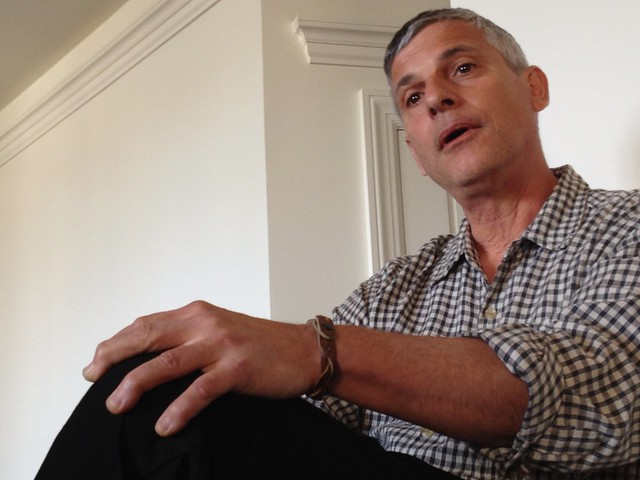
2012/366/103 Jon Udell in Mid Thought flickr photo by cogdogblog shared under a Creative Commons (BY) license
It came from what Jon noticed in the ways that agile software developers, in environments like software versioning constantly wrote up not only their code, but their reasons for the thinking behind it. It’s as if they were writing about their thinking as they did it. What Jon did was expand it and imagine a world where people in all kinds of disciplines- doctors, plumbers, sandwich makers (that list is mine) had a way of sharing how they approach and solve problems.
And this is the spirit I find behind these “Show Your Work” ideas, to make visible the way people figure things out or apply their skills. It pretty much underpinned my approach to teaching ds106, where I asked my students not just to create media and slap it into their blog, but to write about the ideas behind it and the process by which they created it (see how to Blog Assignments Like a Champ). This was a direct application of the way I saw Scott Lockman work with his Temple University Japan students when he taught ds106.
Students and people in general do not readily grasp this idea. After a good 10, 15 years of school conditioning, they know that everything is focused on the Final Product. Who wants to let their rough draft dangle out in the open? Their unformed ideas? WHAT IF SOMEONE SAW THAT? OMG! Everything is focussed on the finished thing, and to me, I am so much more interested and learn from how it got there.
And all of this is usually something we never have access to.
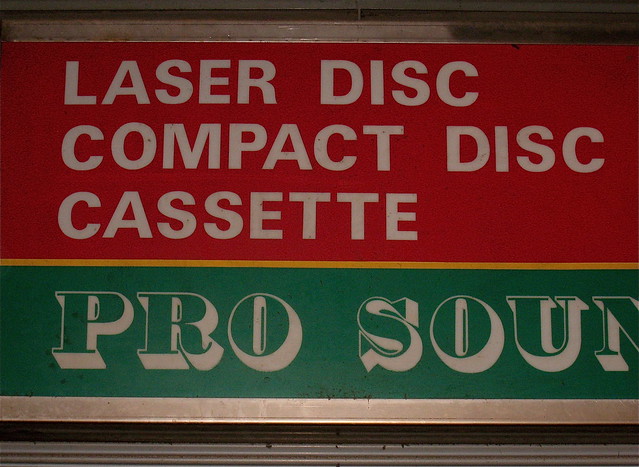
The Obsolete Media Store flickr photo by cogdogblog shared into the public domain using Creative Commons Public Domain Dedication (CC0)
My analogy is DVDs, which are now featured in the Obsolete Media Store (hey that’s my photo in flickr of a sign I saw in Hong Kong in 2008).
I enjoy a good movie on DVD. But what I really enjoy are the extras on the disc- the deleted scenes, out takes, I will watch it again to hear the director’s commentary. This happened in May when I visited Gardner Campbell- we watched Quadrophenia, then watched the Directors commentary, then talked about it. It’s a singular experience to watch a movie, but to re-process it, on our own and/or with others, takes the experience to a whole new level.
I have been disappointed to get a DVD and find no extras.
Of course this is moot as viewing shifts to NetFlix, Hulu. We do not get the extras. This makes me sad.
The Udellian idea of Narrating the Work I Do, is what drives my blogging. It’s not to say “Here’s my new book”, “Here’s my slides” — it’s to be narrating as much as I can everything that leads up to that moment. Some of the things that are not complete, or may never will be (outtakes). Or how they got to that state (making of, director’s commentary).
My Blog, my Life Extras.
But I am not here to say they way I do my life narrating, in blogs, in photos, is what you should do. Not only is this like writing as in Finding Your Voice, but Finding Your Way. Like Mitch Robbins learned from Curlie, he has to figure out what that One Thing is
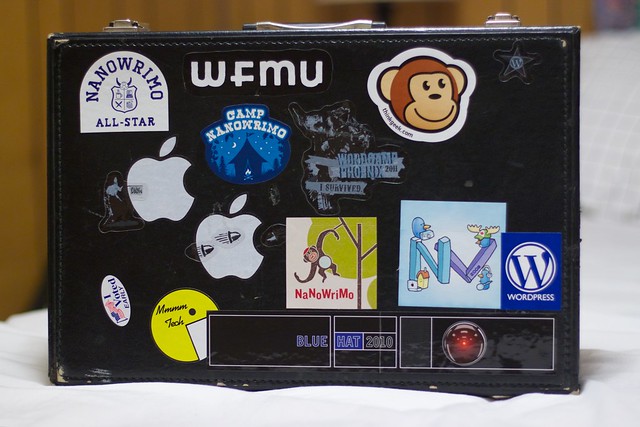
My Important Case flickr photo by cogdogblog shared under a Creative Commons (BY) license
The second strand I will grasp at is the elusive eportfolio. I seem to recall first coming across the concept in the mid 1990s; I attended a NECC conference and met the “grandmother” of eportfolios, Helen Barrett. Hey, I have an idea, blogs as eportfolios (2003). Colleagues are still trying to hammer out the concept in 2014.
Here are the problems I see in the way we think about eportfolios
- The One System to Fit Them All Approach we think one platform, product, system is going to work best for all individuals.
- It Looks Like Its For You But Its Not who really do these serve? If it’s for assessment and tracking, the individual’s needs are subservient. What am I really getting out of this, at a personal growth level, but shoving stuff in the portfolio?
- It’s a Chore If the portfolio making act is not one that is rewarding or motivating, then it becomes a task I am doing… for someone else.
- It’s All About the Shiny Final Thing It becomes a thing of where we want to show out “best” work. the final stuff. Once again, where is the place for all that led up to that, the ideas, the wrong turns? If portfolios are just the best stuff, there’s not a whole record of growth and evolution.
It’s all movie and no extras. I think we should not be telling students how or what to portfolio, we should be helping them figure a way and means that works for them.
This was and is still feeling like a rambling post, as most are. I was trying to find something new that tied it together, and it was there right in front of me– in a book I was reading.

A Completely Incomplete Complete Novel flickr photo by cogdogblog shared under a Creative Commons (BY) license
The Last Tycoon is the novel F Scott Fitzgerald left unfinished when he passed away in 1940. The published form in the book I found at a used book sale was edited with notes left by Fitzgerald, so we never know exactly how it might have turned out had he completed it.
Like Gatsby, Monroe Stahr is an enigmatic, powerful central character wrapped in mystery. The setting though, is not the idle rich of the East Coast, but the emerging film industry of the 1930s. Stahr is some kind of natural movie production genius, he has a knack — not for telling his employees exactly what to do in writing, lighting, scoring, but nudging them in a way that they become better. His work is his life, but he carries pain and loss and desire, and an awareness his health will fail.
But he also sees, I think what Fitzgerald was seeing, that the leaders in film making who were master craftsmen like Stahr, where going to be supplanted by bottom line business thinkers.
Hmmm.
But I am not aiming to do a literary analysis. The way the book is published, they don’t try to have someone wrap it up nice and neat — not a perfect portfolio item– they leave it somewhat open ended with the last chapter having more of a review of the notes the author left, fragments of early letters to the publisher with different ideas on the novel as he was working it out.
The end of the published book shows us insight into the author’s process we do not always get in a book– the planning:
There is a recounting of a conversation Fitzgerald had with a colleague that completely informed the metaphorical scene in the cockpit of the plane in the story’s first chapter. There are plot parts and characters in the notes that did not make it into the story.
One tends to think in reading a novel that the story is a singular thing as we read it in published form, but the author’s notes in this unfinished book show how much work, and rework went into the work. We have meta information, extras about the writing process. There is even the whole ending scene that was never fleshed out, the plane crash and the kids who discover the remains.

Doggie Dreams flickr photo by cogdogblog shared into the public domain using Creative Commons Public Domain Dedication (CC0)
I know this is a pipe dream. Who’s going to take the time to narrate their thinking? Isn’t there an app for that?
I do it because it helps me think, understand, work through ideas. That’s it.
So I leave with Fitzgerald’s last note to ponder:
ACTION IS CHARACTER.
Featured Image:
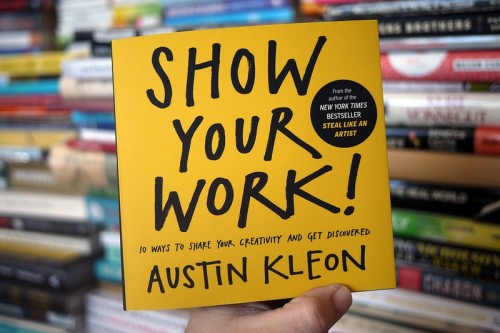
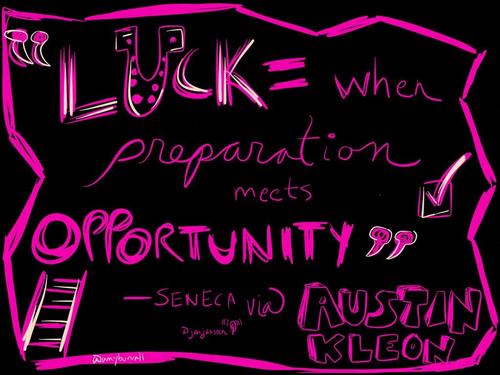
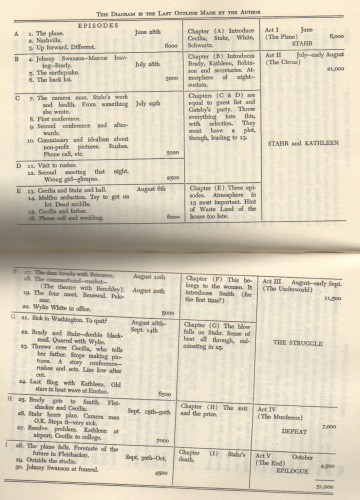



Your thoughts on narrating your thinking reminded me of John Hattie’s research – http://visible-learning.org/hattie-ranking-influences-effect-sizes-learning-achievement – which ranks the best educational methods by effect size, and points to the importance of meta-cognitive strategies. And if you think about the top-ranked strategy, self-reported grades, it too is closely tied to the ability to be reflective about the work and the process.
Bottom line: show your work / talk about your work actually works for learning.
Thanks for sharing your work.
A topic very much after my own heart!
1. “Show Your Work” is an excellent book and very much attuned to revealing process, not just product, and he isn’t targeting business; he’s targeting artists.
2. Portfolio assessment, whatever else we may think of it, by definition is not supposed to just “shoving papers in folders.” The practice in writing is to not only collect multiple drafts to show longitudinal composition, but to guide students through the process of metacognition–curate, narrate, share.
3. Ever since I learned about digital storytelling, I have kept a blog, Mind on Fire (currently taking a nap while I move her to a new home and a domain of her own), and I have inadvertently now chronicled my growth from day one of that new obsession.
Every wrong move, every experiment, every growth spurt or new opportunity or new idea is hanging out there in public, and that has turned out to be incredibly useful over the years for so many reasons, not the least of which is to encourage my digital storytelling students.
I have learned that process orientation and metacognition are not for everyone. Some people just don’t want to reflect; others actually can’t.
Those what can, should.
As you do.
So well.
Alan.
Thanks Sandy- you are right to call me on my gross generalization of the portfolio process. Sometimes it seems like the reasons people are asked/encouraged to create a portfolio it is towards a goal of … A job? A art gallery exhibit? To me the goal is to become a better you, and the other outcomes are secondary benefits. Or… when you think of the process of adding to your portfolio, is it akin to a task, a checklist, or is it a burning desire to do it?
Hi Alan,
Thanks,
I am completely with you with I think we should not be telling students how or what to portfolio, we should be helping them figure a way and means that works for them, but struggling with how we do this nationally (even in a small nation) for school age learners that is practical. I just pulled a quote for use locally and professionally. I’ll be taking your post to the discussions.